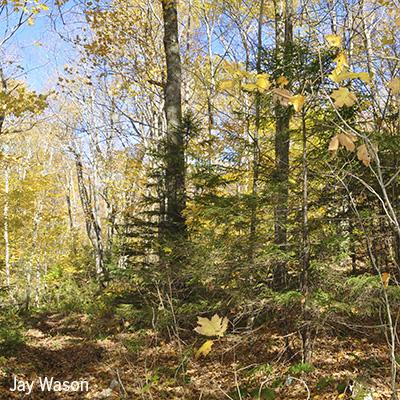Global Change Fingerprints in Montane Boreal Forests: Implications for Biodiversity and Management of the Northeastern Protected Areas

Substantial warming of the world’s climate in recent decades is likely to affect the ecology of the Northern Forest especially in the mountains, where forests occur along steep elevational climatic gradients. Lower range limits of montane spruce-fir forests should be particularly sensitive to climate change. Climate warming is projected to be of sufficient magnitude to cause many mountains in the region to lose climate characteristics of the spruce-fir zone by 2100.
To improve biodiversity conservation and protected area management in the Northern Forest, NSRC researchers assessed the character and ecological mechanisms of ongoing changes in the region’s mountain forests. Researchers collected vegetation, climatic, and soil data on long-term plots on Whiteface Mountain in New York and on 11 other mountains across the four Northern Forest states. They determined that while climate envelopes (elevation range and associated climate at which a tree species competes best) have shifted substantially upslope, tree species distributions and growth have not yet clearly responded to warming.
Tree species, however, have responded to improving precipitation chemistry (decline in acid rain) and have reinvaded areas that were historically logged. Red spruce, in particular, showed continuing recovery with increasing growth over time and gradual colonization of lower elevations. Adapting forest management and biodiversity conservation to gradually changing environmental conditions and forest composition will pose challenges as tree species show individual responses rather than synchronous upslope migration patterns.
